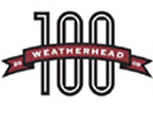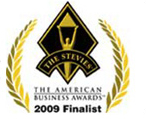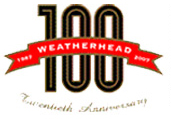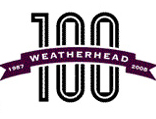ABOUT ARTWORK AND YOUR CUSTOMIZED PRODUCTS
|
We are happy to provide basic
artwork services for your promotional products at no charge. We can use any of
the thousands of fonts and clip art images in our library or we can guide you to
various sources that have additional fonts and graphics so that you can select
the elements that you would like to incorporate in your artwork. Our promotional
products professionals will be happy to work with you to make your customized
items special. Just let us know what you have in mind
If you already have artwork we will be happy to review
it and let you know if it will be usable in the existing format or if additional
work will be needed. In some cases we will be able to use your artwork as is or
will be able to convert it to a usable format at no charge. In other cases there
may be a minimal recreation charge.
Almost all artwork that we use is ultimately saved as
vector art. If this isn't a term that you are familiar with - don't worry!
Vector art is included in the definitions below, but the main thing to remember
is that we all want for your customized products to look great. In order to
accomplish that goal high quality production ready artwork is required. If you
provide artwork and are told that it isn't usable as is it won't be because we
want to make the process complicated. It will only be because we want you to be
pleased with the final product.
|
Artwork Information for for Graphic ArtistsIf you are providing artwork we ask that whenever
possible it be submitted as 100% vector art with all fonts converted to
outlines/curves and saved as an AI, EPS, or PDF file.
Artwork Checklist:
• DO convert all fonts to outlines/curves.
• DO save files as either AI, PDF, EPS.
• DO be sure elements such as text point size, line weight etc. meet the
requirements for the individual products printing method when the art is at 100%
imprint size.
• DO include a color copy and indicate PMS colors when applicable.
• DO NOT use JPG or GIF files that were used in a Web site. No matter what you
do to it or how it is saved, it will probably not be suitable for printing. (If
these are the only files available we will be happy to take a look at them and
let you know if we can convert them or if they will need to be recreated.)
• DO NOT use art that has halftones or gradients without checking first to see
if they are acceptable for the product(s) being ordered. In many cases, they can
not be reproduced.

Definitions:
Vector Art
-
Images are created by mathematical formula, also called object-oriented
graphics. The art is constructed of points, lines, curves and shapes that are
scalable to any size without losing clarity. Vector graphics is created in
drawing programs, such as Illustrator©, CorelDraw© and Freehand©. These images
are very flexible to work with.
Raster Art (Bitmapped) - Images are pixel based, it consists of rows and
columns of dots. Raster art is created by scanning, most desktop publishing
programs and paint programs such as Photoshop© and CorelPainter©. Raster
graphics can become distorted, ragged and blurry looking when reduced or
enlarged, they are NOT very flexible to work with.
Resolution - This is the density of the dots in a raster (bitmapped)
image file, also known as the DPI or dots per inch. Sharpness and clarity of the
image is determined by the resolution. What looks sharp on a computer screen may
not always give you a sharp image when printed. To look good on a computer
screen an image only has to have a resolution of 72 DPI. For print reproduction,
usually a minimum of 300 DPI is required for an image to look sharp. If you have
an image that is less than 300 DPI, changing the resolution to 300 DPI does not
improve the quality, it only increases the file size by spreading the available
information in the file across a greater number of pixels.
Halftones and Gradients
- Halftones are
series of dots that represent a percentage or shade of a color. Gradients are
series of dots that change in density gradually and smoothly, such as going from
light to dark or one color to another.
File Format - How information in a file is encoded. It specifies if a
file is binary or ASCII and how the information is organized electronically. A
computer program will be able to read and use only file formats that it
recognizes. The file format does not necessarily have anything to do with the
quality or specifics of the art or contents within the file. Examples of file
formats are: PDF, EPS, TIFF, AI, CDR, JPG and GIF.
PMS Colors
- PMS stands for Pantone
Matching System©. It is a standard color matching system used by the printing
industry to print spot colors. Each ink color has a formula that the printer
uses to mix the ink. Be aware that if the material being printed is a color, it
can change what the chosen PMS color(s) will look like on the finished product.
Also, there can be some color variation depending on the surface texture being
printed. PMS color matching is available on many products that we offer but
there may be an additional charge for non-standard imprint colors.
How To Convert Fonts to Outlines/Curves:
• In Illustrator©, select all, go to the Type menu and choose Create
Outlines, and save.
• In CorelDraw©, select all text, go to the Arrange menu and choose Convert to
Curves and save.
• Note: These procedures will convert all selected fonts to outlines/curves.
There should be a similar procedure in other drawing programs. Once this is done
the text is recognized as a vector object and can no longer be edited as a font.
If you want to be able to edit your text later, be sure to make a duplicate of
your file before you convert the fonts to outlines/curves.
|









